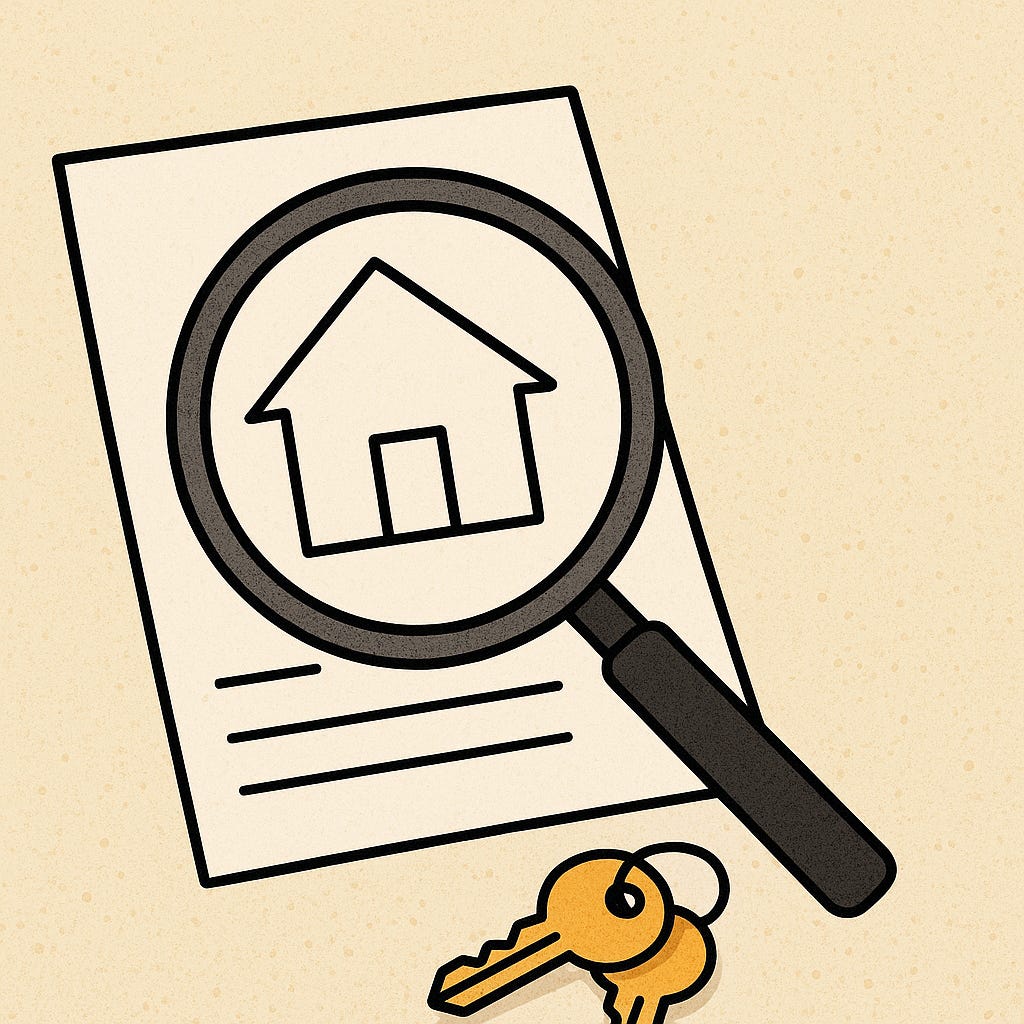How to Properly Evaluate a Home Before You Buy
5 steps to seeing past the listing and making a clear decision
I can’t tell you how many times I’ve walked into a home with a client who said, “This looked amazing online”… only to find it felt completely different in person. That’s the thing about listings. A home listing is not the home. It’s an ad, a sales pitch for the home. And like any pitch, it highlights the best angles and leaves out the rest. Every photo is staged, every word is chosen to persuade, and every omission is deliberate. That doesn’t make it dishonest, it just means it’s your job as a buyer to go deeper than the ad.
Here’s the system I use with clients to evaluate a home properly.
Step 1. Look Past the Ad
Photos are often taken with wide-angle lenses that make rooms look bigger than they are. Cropped shots hide awkward corners. Too many close-ups of flowers or fruit bowls usually mean the actual rooms aren’t as photogenic.
Descriptions have their own code. Cozy usually means small. Charming usually means older. Phrases like ready for your vision usually mean the home isn’t move-in ready.
But the biggest clue isn’t what’s written. It’s what’s missing. If there are no kitchen photos, assume the kitchen needs work. If the backyard isn’t shown, it’s probably small.
Step 2. See It In Person, See It Twice
The only way to understand a home’s light, noise, and flow is to walk through it yourself.
The first showing gives you a general sense of the home. How the rooms connect, how the space feels, whether anything obvious stands out. The second showing is where you notice the finer details: creaky floors, the neighbor’s barking dog, or the way the light shifts throughout the day.
If you’re serious, see it twice. And see it at a different time of day. Morning traffic or evening noise can completely change how a home feels.
Step 3. Check Under the Hood
Photos and descriptions tell the story sellers want you to hear. Disclosures and inspection reports tell the full story.
This is where you find the unglamorous but important details: the age of the roof, whether the foundation has been reinforced, if the sewer lateral has been replaced, how old the electrical and plumbing systems are. These aren’t fun to talk about, but they’re the things that cost tens of thousands down the line.
A smart buyer reads disclosures as carefully as they’d read a contract.
Step 4. Evaluate the Neighborhood, Not Just the House
Homes don’t exist in a vacuum. That perfect kitchen won’t matter if you hate the street you live on.
Google Street View can reveal a lot, but nothing replaces walking the block. Do you feel safe? Do the surrounding homes feel cared for? Is there foot traffic or noise that would bother you?
Zoom out further: schools, commute, grocery stores, coffee shops, parks. These are the daily details that will shape your life far more than granite countertops.
Step 5. Pay Attention to Market Context
Days on market tell their own story. A home sitting for three weeks in the Bay Area almost always means one of two things: it’s overpriced, or it has a trade-off buyers aren’t willing to make.
Takeaway
A listing is the sales pitch. Evaluating a home is about cutting through that layer and focusing on what really matters.
See the home in person, see it twice if you can, read every report, and walk the neighborhood.
And if you only have a short window before offers are due, don’t panic. Look at what’s in the disclosure packet, walk the neighborhood, and trust the signals you’ve gathered from seeing other homes. You may not get weeks to think, but you can still make a clear-eyed decision.


